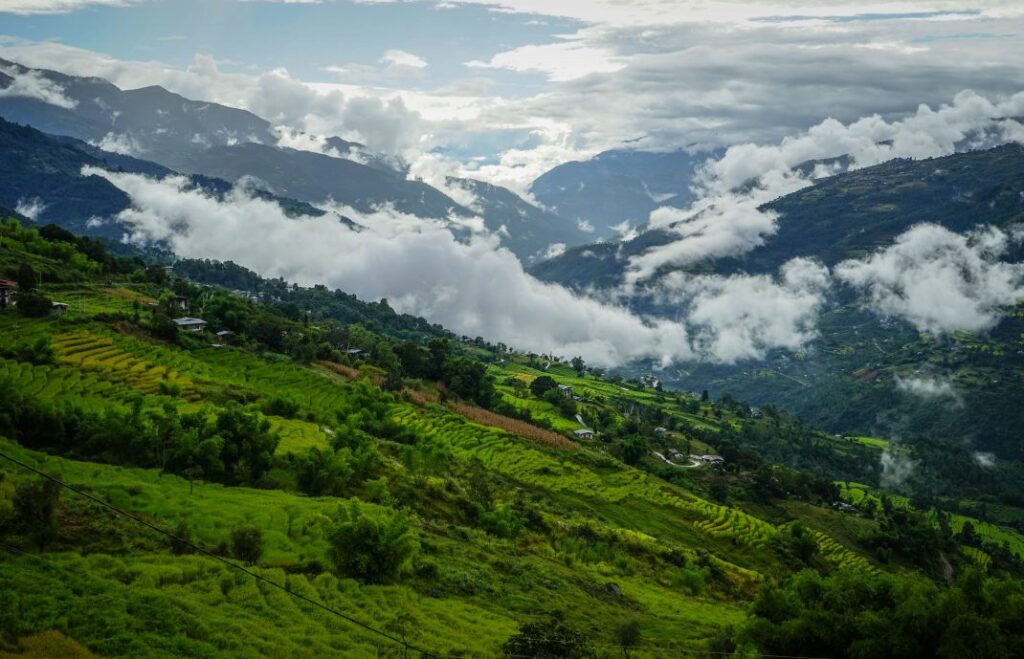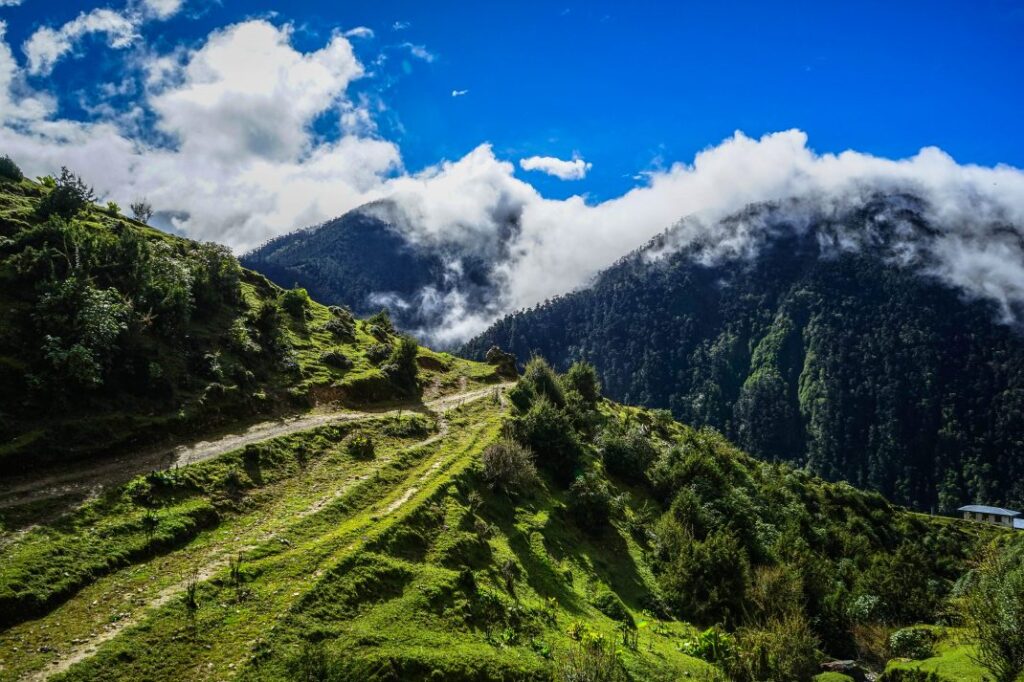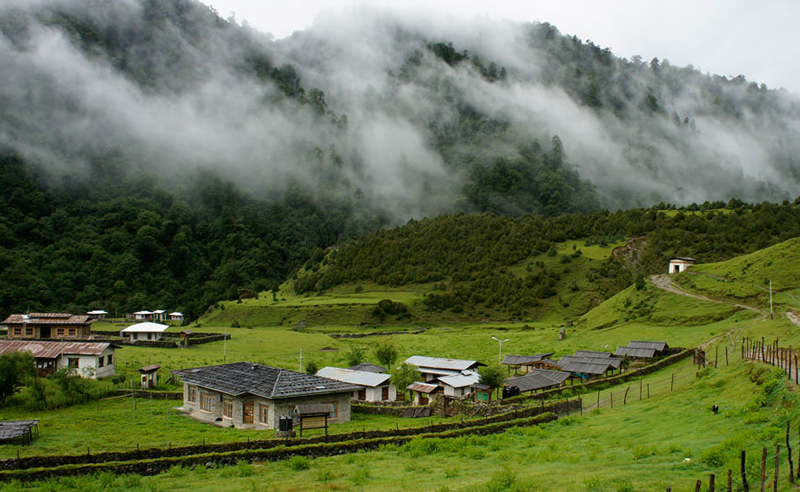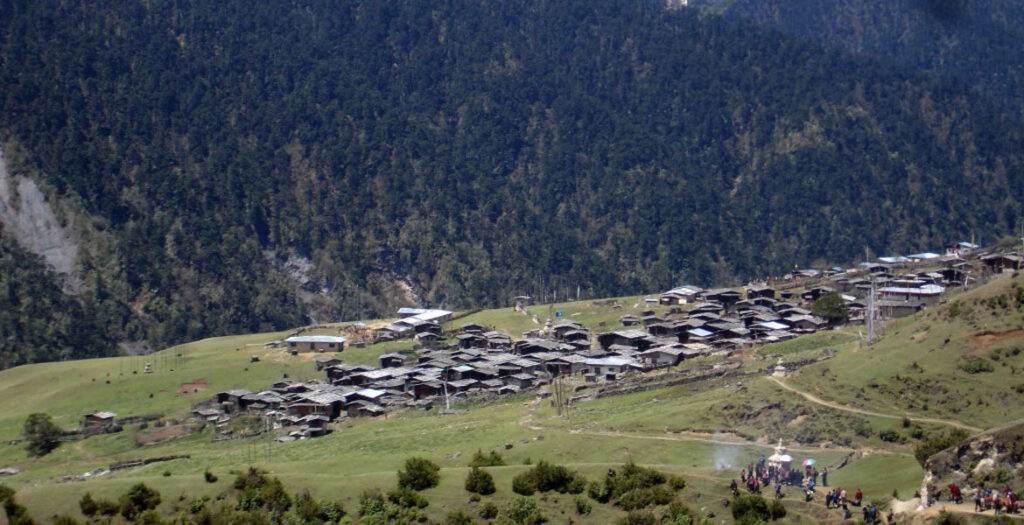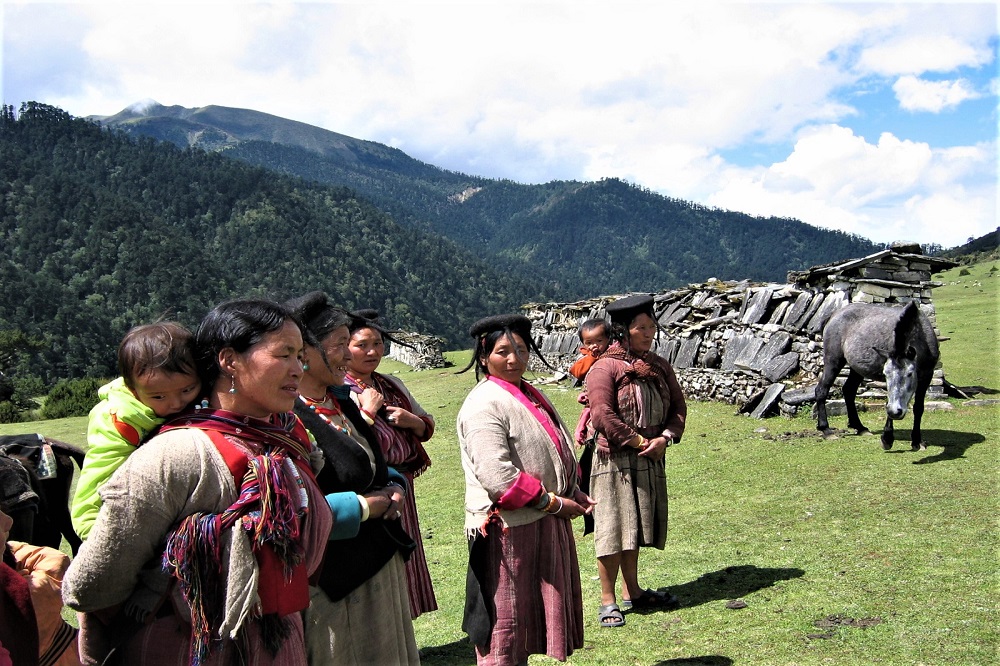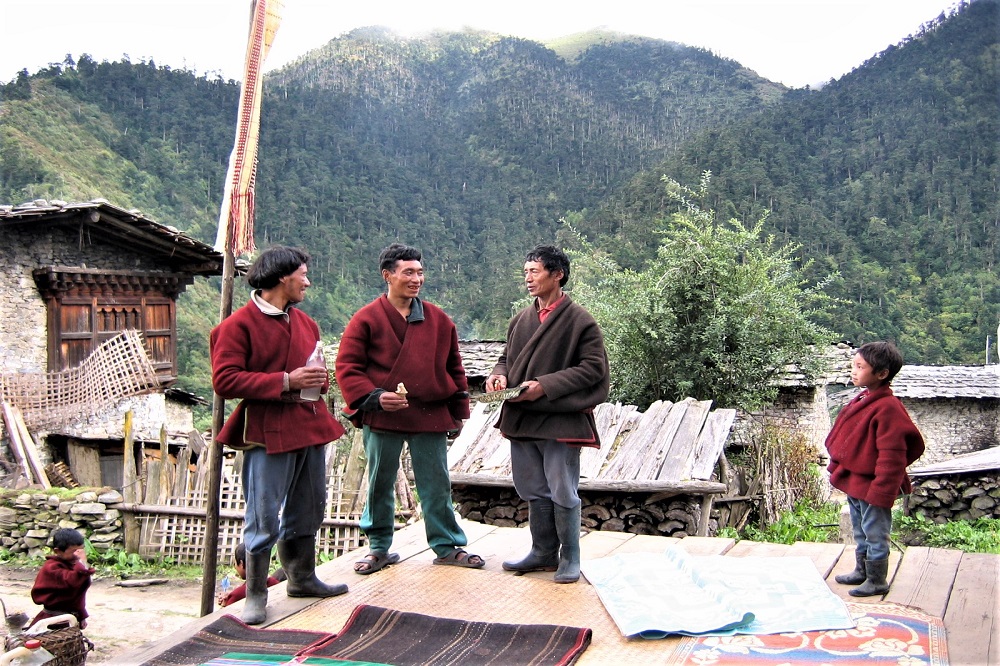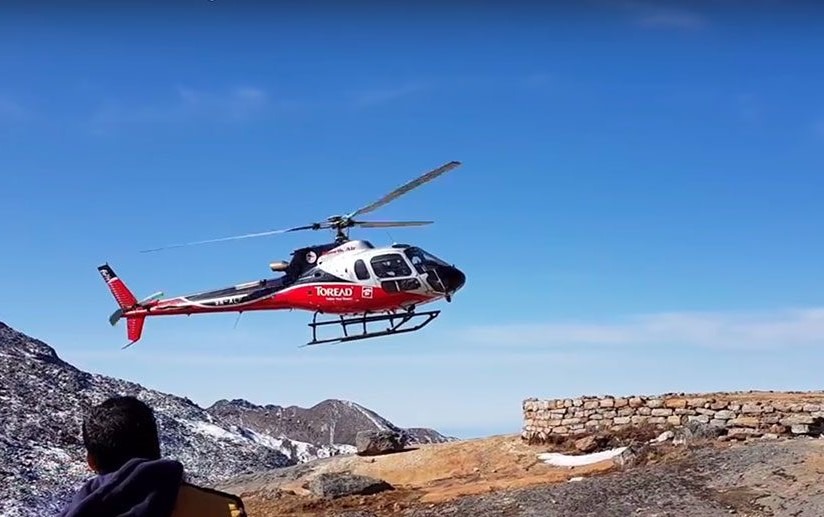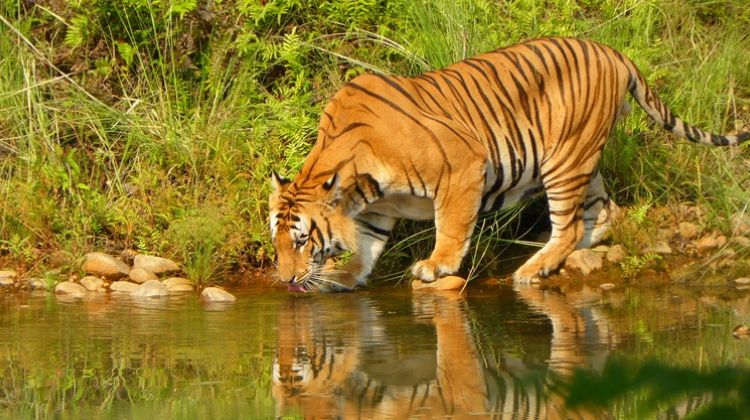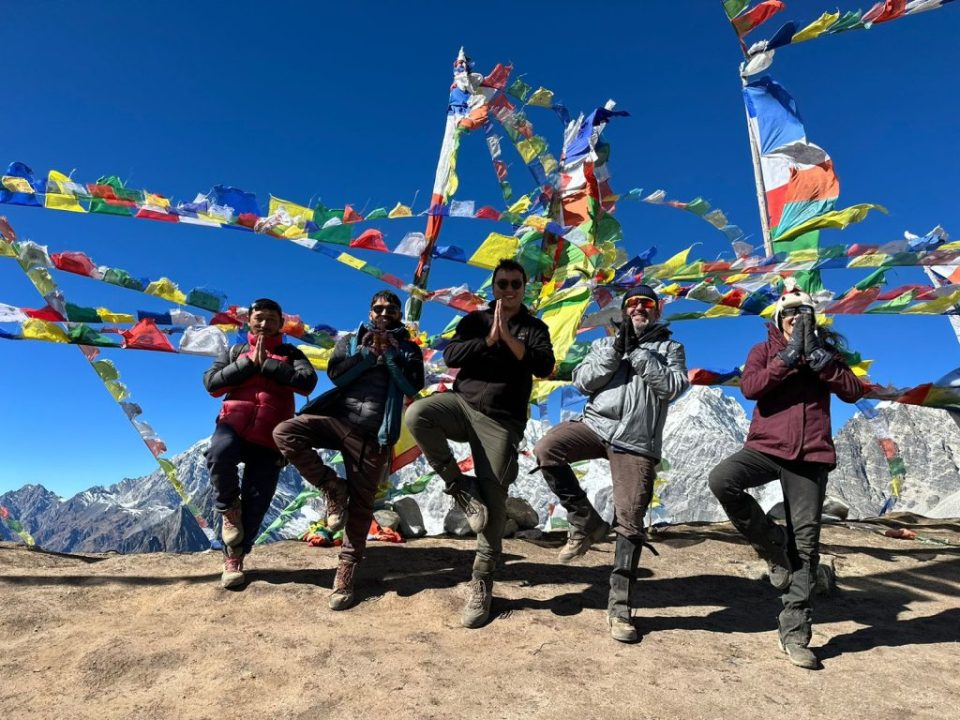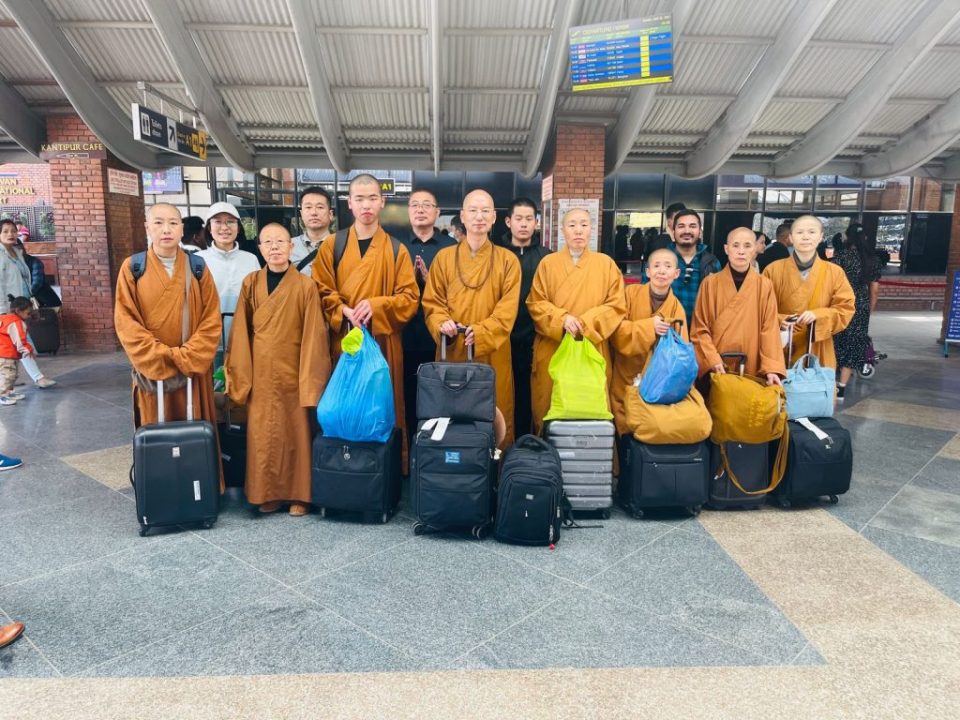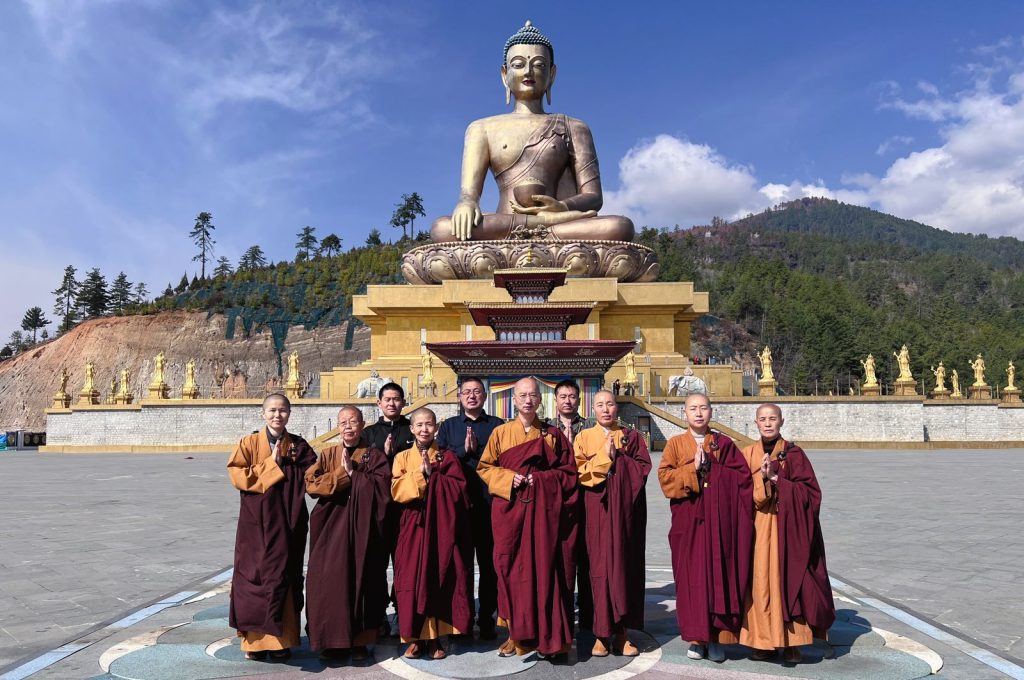Merak Sakteng Trek-13 Days
Fitness Level
ModerateTrip Introduction
Bhutan is a Buddhist kingdom on the Himalayas’ eastern edge known for its monasteries, fortresses or dzongs, and dramatic landscapes ranging from subtropical plains to steep mountains and valleys. It allows you to experience its well-preserved and pristine natural environment. Merak Sakteng Trek is a newly opened trek that runs through the Sakteng Wildlife Sanctuary or Migoi National Park Covering 650Km. It is home to the critically endangered snow Leopard, Red Panda, Himalayan Black Bear, Himalayan Red Fox, and Migoi.
In one of the most magnificent Pastoral valleys, it offers a semi-nomadic lifestyle, culture, and idioms. Since their migration from Tsona in southern Tibet centuries ago, it has been home to the Brokpas. The Brokpas, a nomadic tribal people from eastern Bhutan, move their herds of livestock from lower valleys in the winter to the higher pastures in summer.
Trip Facts
| Country | Bhutan |
| Duration | 13 Days |
| Grade | Moderate |
| Maximum Altitude | 4,100m/13,145ft |
| Accommodation | Hotels and Camps |
| Best season | Mar, Apr, May, Sept, Oct |
Trip Highlights
- Hike to Tiger Nest Monastery.
- Pass through the forested area of rhododendron and juniper.
- Experience the Bhutanese Culture and Tradition.
- Experience the amazing Mountain View from the Trail.
- Trek through the Sakteng Wildlife Sanctuary.
- Experience the Lifestyle and Culture of Merak and Sakteng.
- Encounter the Brokpas yak herders -semi nomadic tribal people wearing a unique style of dress.
- Experience one of the Himalayas ‘best and most rewarding adventures.
Is this trek appropriate for you?
- The Merak and Sakteng Trek is the Moderate Trek. You can easily complete this trek if you are physically and mentally prepared and willing to do so.
- You will be Trekking for 4 Days. The Path can be completed in as little as 5 hours as much as 7 hours.
- The walk is not tricky, there is no Climbing or Scrambling but the path is rocky and hilly.
- Each day you will cover 200 to 400 meters in height while trekking. The Highest Point in the trek you will reach on the trek is 4,100m.
- The weather and Remoteness of this trek, as well as dealing with the high altitude, require a slow pace and the need to stay hydrated.
Itinerary
| Day | Activities | Duration |
| 1. | Arrive at Paro (2,200m/7,217ft) | |
| 2. | Hike to Tiger Nest Monastery (3,048m/10,000ft) | |
| 3. | Fly to Bumthang (2,600m/8,530ft) | 1hrs |
| 4. | Drive from Bumthang to Mongar (1,600m/5,249ft) | 6-7hrs |
| 5. | Drive from Mongar to Trashigang (1,174m/3,851ft) | 3-4hrs |
| 6. | Drive from Trashigang to Merak (3,400m/11,154ft) | 4-5 hrs |
| 7. | Trek from Merak to Miksateng (3,079m/10,101ft) via. Nachung La Pass (4,100m/13,145ft) | 6-7hrs |
| 8. | Trek from Miksateng to Sakteng (2,950m/9,678ft) | 5-6hrs |
| 9. | Explore Sakteng | |
| 10. | Trek from Sakteng to Joenkhar Teng (1,733m/5,685ft) and drive to Trashigang | |
| 11. | Drive from Trashigang to Bumthang (2,600m/8,530ft) | 9-10 hrs |
| 12. | Fly to Paro (2,200m/7,217ft) | 1hrs |
| 13. | Departure |
Itinerary
Departure from : Kathmandu, Nepal
Arrival On : Kathmandu, Nepal
Day 1
Arrive at Paro
You will be greeted with a warm smile when you arrive at Indira Paro International Airport. Our representative will greet you at the airport and transport you to your hotel. Proceed to the hotel and check in. Our guide will meet you in the evening and give you a quick overview of the trip.
Dinner and Overnight at the Hotel.
Day 2
Hike to Tiger Nest Monastery
Early in the morning, after breakfast, we will go for the hike up to Taktsang Monastery. It is the most sacred pilgrim’s center for Buddhists from all over the country, hanging on a cliff 900 m above the Paro valley. It was built by the Bhutanese ruler Tenzin Rabgye on the site of the meditations cave of Guru Rinpoche who converted Paro valley to Buddhism. As it is believed that Guru Rinpoche flew over there sitting on the back of Tigress and meditating for 3 months. So, this monastery is also called Tiger’s Nest Monastery. It takes 2hrs to reach the closest monastery viewpoint at the top of the hill and 1hr to reach the monastery from there. Descend to the valley. On our way back, we will stop at the café for lunch. After lunch, we will head back to the hotel. Free for the rest of the time.
Dinner and Overnight at the Hotel.
Day 3
Fly to Bumthang.
After breakfast. Check out from the hotel and fly to Bumthang. On arrival, our representative will pick you up and transfer you to the hotel. Check into the hotel. Free for the day. You will go to Jakar Dzong, a fortress in Bumthang. Located on a hill overlooking the town. After that, you can have your lunch. After lunch, continue to the Kurjey Lhakhang. Return to your hotel or take a stroll around Bumthang.
Dinner and Overnight at the Hotel.
Day 4
Drive from Bumthang to Mongar.
After breakfast, depart for Mongar. You’ll be on the road for 6 to 7 hours. On the way, you’ll be able to take in the breathtaking scenery. You’ll pass by waterfalls, a lush green forest, and Ura Village. You will ascend to Kuri Zampa after crossing the Thrumshing La Pass. You’ll eat something on the way. Continue on your way to Mongar.
Dinner and Overnight at the Hotel.
Day 5
Drive from Mongar to Trashigang
After breakfast leave for Trashigang. You’ll be on the road for 3 to 4 hours. You will pass through several villages. From there, take the off-road path to the Chazam Bridge, which leads to the Gom Kora Temple, one of Bhutan’s most beautiful temples. You’ll eat something on the way. Continue on your way to Trashigang.
Dinner and Overnight at the Hotel.
Day 6
Drive from Trashigang to Merak
After Breakfast leave for Merak. You’ll be on the road for 4 to 5 hours. You will pass through terraced fields with a breathtaking view. You will be driving on a dirt road. You will pass through Rangjung Town and Radhi Village, which are known for their “Bura” Gho and Kira, a raw silk textile. You’ll stop for lunch on the way. Continue on your way to the nomadic Brokpa village of Merak.
Dinner and Overnight at the Hotel.
Day 7
Trek from Merak to Miksateng
Your trek journey begins right from here. After breakfast leave for Miksateng. You’ll be walking for 6 to 7 hours. Starting with a descent down to the river and walking for 1 hour along the river you will reach a steep hill. You’ll gradually make your way up the hill crossing the Nachung La Pass through a dense Juniper and Rhododendron Forest. You’ll be able to eat our lunch on the way. Descend toward Miksateng campsite from there. During April, the campsite is surrounded by Rhododendrons.
Dinner and Overnight at the Camp.
Day 8
Trek from Miksateng to Sakteng
After Breakfast leave for Sakteng. You’ll be walking for 5 to 6 hours. You’ll start by descending toward the river, then cross it and walk along the river bank for 1 hour until you reach a steep hill. You will then climb the hill using small Chortens. You’ll eat something on the way. Continue on your way through the beautiful woods to Sakteng Campsite. You can also spot some red pandas among the trees.
Dinner and Overnight at the Camp.
Day 9
Explore Sakteng
Today is a day of rest and exploration for you. Begin your day a little later today. Merak- Sakteng lies within the Sakteng Wildlife Sanctuary, so you will get to learn about the isolated Himalayas Brokpa people, an interesting ethnic group of Bhutan; see endangered animals such as red panda, Himalayan Red fox, Snow leopard, Black bear.
After breakfast, go on a tour of Sakteng village. Learn about people’s way of life. Discover their culture and language. Enjoy your meal while interacting with the locals. After lunch, you can hike a little further to get an even better view.
Dinner and Overnight at the Camp.
Day 10
Trek from Sakteng to Joenkhar Teng and drive to Trashigang
After breakfast leave for Joenkhar. Today is the last day of your walk. You will be walking for several hours. Today’s walk is mostly downhill but first, you’ll begin with a short ascent to a hill to the west then descend toward the river, walk through the dense forest from there. Continue walking toward the Joenkhar. You’ll get your lunch. After lunch, proceed to Trashigang. You will pass through the Brokpa and Sharchopa villages.
Dinner and Overnight at the Hotel.
Day 11
Drive from Trashigang to Bumthang
After Breakfast leave for Bumthang. You will be on a drive for about 9 to 10 hours. You will pass through several villages. On the way, you’ll be able to take in the breathtaking scenery. You’ll pass by waterfalls and lush green forests. You will have your lunch on the way. Further, Proceed toward the Bumthang.
Day 12
Fly to Paro
After breakfast. Check out from the hotel and fly to Paro. On arrival, our representative will pick you up and transfer you to the hotel. Check into the hotel. Free for the day. You can stroll around the Paro and have a night walk around the street of Paro.
Dinner and Overnight at the Hotel.
Day 13
Departure
The 12-day journey has concluded. Today is your last day in Paro. Our representative will have a short discussion on the trip and take your feedback after a hearty breakfast. Following this session, he will drive you to the airport in our private transportation 3 hours before your trip.
Route Map
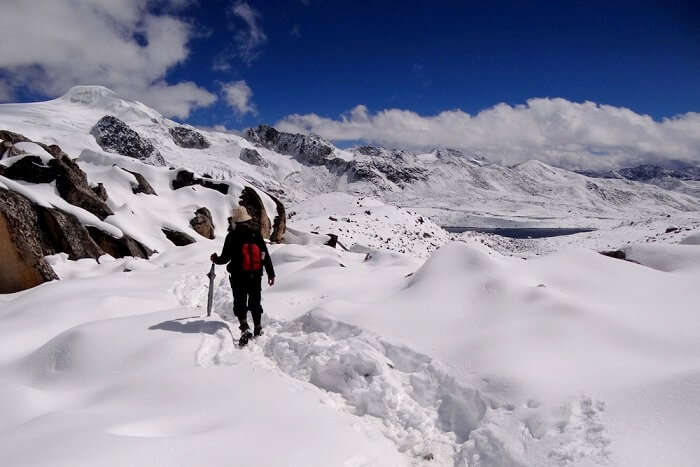
Altitude Map

What's Included
- Arrival & Departure: Airport – Hotel transfer – Airport (Pick Up and Drop on a private basis).
- Domestic flight Airfare: From Paro to Bumthang and back.
- Accommodation in Paro: 3 nights at Star category hotel on Twin sharing and BB basis.
- Accommodation in Bumthang: 2 nights at Star category hotel on Twin sharing and BB basis.
- Accommodation in Mongar, Trashigang, Merak at basic hotels on Twin Sharing and BB basis.
- During the trek, accommodation in available camp on a sharing basis.
- Welcome Dinner at the restaurant in Paro.
- 3 meals a day (Breakfast, Lunch, Dinner)
- Permits: All necessary paper works, entry permits, road permits.
- All government and local taxes if necessary.
- Member transportation: – Air Transportation: Fly from Paro to Bumthang and back. Road Transportation: From Bumthang to Mongar to Trashigang to Merak. From Joenkarteng to Trashigang to Bumthang.
- Drinking water: Bottles of boiled water daily.
- Experienced driver
- Guide: Government licensed Guide (English speaking) during the trek.
- Porter: Porters (2 trekkers: 1 porter) up to 15kg during the trek.
- All camping equipment and food supplies.
- Chef: Professional and experienced trekking cooks and assistants during the trek.
- Insurance of all involved staff.
- Comprehensive Medical kit.
- A Tourist Sim Card.
What's Not Included
- Air Fare: International flight airfare.
- Bhutan Tourist Visa fee.
- Extra nights’ accommodation in Bhutan. In case of early arrival or late departure, early return from Trekking (due to any reason) than the scheduled itinerary.
- Personal Insurance: Travel and high-altitude insurance, accident, Helicopter medical & emergency evacuation. *Mandatory
- Personal Expenses: Telephone calls, Internet, Toiletries, battery recharge, hot shower, laundry, soft drinks, beer, and any alcoholic beverages.
- Personal Equipment: Clothing, Packing Items or Bags, Personal Medical Kit, Personal Trekking equipment.
- Rescue Evacuation: Medical and emergency rescue evacuation costs if required. (Rescue, Repatriation, Helicopter, Medication, Medical Tests and Hospitalization costs).
Equipment List
What to bring ?
General
Tailor Your Holiday
Everyone has their own preferences in terms of destination, journey time, and budget. As a result, sticking to our plan isn't necessary. We will create a personalized itinerary for you that includes accommodations, transportation, meals, and tour guides. We guarantee you the best Tailor-made Package because this is your trip. You have the option to personalize it, as your liking. Let us Plan together to make your Vacation worth it.
Fixed Departure
Why Travel With Us?
Secure Online Payment, No Credit Card Fee
Lifetime Deposit
24/7 International Support
All Inclusive Price
Travel with Locals. Support Locals
Private & Tailor-Made Trips
Support Local Communities & Donate to Charity
Secure Online Payment, No Credit Card Fee
The ideal season to travel
Spring
March: The month of March is ideal for trekking and admiring the spectacular mountain peaks. The Merak and Sakteng Trek trail will be crowded with hikers beginning in March. In the Merak and Sakteng Trek, the spring season begins in March, the month of the Rhododendron. Trekking in March will provide you with the most memorable experiences in a pleasant and mild climate. At lower altitudes, the weather is not particularly hot, and at higher altitudes, it is not particularly cold. The views of the mountains are spectacular, and the trail is excellent. Nature can be experienced at its most beautiful.
April: April is the beginning of spring in Bhutan, and the weather is ideal for trekking to Merak and Sakteng Trek. The views are bright and clear at this time of year, and everyone enjoys spring. The surroundings are vibrant and colorful, with rhododendrons in bloom. It is the best time of year to see various bird and butterfly species. During your April trip to Merak and Sakteng Trek, the weather is completely in your favor. The moderate heat of the sun, combined with the lack of wind, makes it ideal for trekking. Furthermore, the amount of rain and snow is insignificant.
May: May, the final month of the spring season in Bhutan, is much hotter. The Merak and Sakteng Trek in May has the highest temperature of the year. Temperature and weather will vary depending on the altitude throughout the trek. During the day, the weather in the lower sections will be extremely hot. The nights, on the other hand, are tolerable.
Summer
June: June is the coldest time of the summer and has the least amount of rainfall. The month of June is the offseason and therefore less popular for trekking. In the region, June marks the start of the wet monsoon season. The weather is slightly humid, and you can enjoy nature while it is wet and cool. If you enjoy the rain, rainbows, and less crowded trails, this is the month for you. During this month, the air begins to become humid due to continuous rain.
July: Trekking in Bhutan in July isn’t always joyful because the heavy rains can block your view of the beautiful mountains you’ll pass through. In July, you will notice that the temperature is not as chilly in The Merak and Sakteng Trek. As the rain washes away the dust and pollution, the environment opens up and becomes very fresh, and you will be able to enjoy nature despite the chilly weather.
August: In the Merak and Sakteng Trek, August is the off-season for trekking. In August, the monsoon season produces strong rains, especially in lower places. Due to weather-related concerns, most hikers avoid this month. The summer monsoon season comes to an end in August. It rains regularly, and you may feel a little chilly as a result. You should also be cautious because the trails are slippery and the possibility of landslides and avalanches is considerable.
Autumn
September: The monsoon season finishes in September, marking the start of the fall season. The optimum time to trek to Merak and Sakteng Trek is in September. The weather and temperature for the Merak and Sakteng Trek are ideal. The temperature is pleasant during the day, but it is extremely chilly at night.
October: October is the month that falls between September and November. As a result, it keeps both monsoon rain and winter’s biting cold at distance. The weather is warm and pleasant in October, with clear skies and fresh air. The nights, on the other hand, are a little chilly, with a brisk breeze coming from the campsite. Throughout October, the weather is pleasant, allowing people to enjoy an unobstructed view of the snow-capped peaks. They can also visit bright valleys and interesting scenery of various colors.
November: The last declared peak season for trekking in Bhutan is in November. Bright, sunny days and beautiful skies characterize November. On the treks, these provide breathtaking, crystal-clear vistas of the mountains. The days are bright and sunny in November. The sky is clear, with perhaps a few stray clouds possible.
Winter
December: In the Merak and Sakteng Trek, December is a rather dry month. It receives fewer than 25 millimeters of rain every year. The Merak and Sakteng Trek is in the shadow of the Himalayas. As a result, December has a lower chance of rain. It is also possible to walk the Merak and Sakteng Trek in December. In December, hikers will get a unique perspective of the region.
January: In Bhutan, January is in the midst of winter. The higher elevation receives moderate snowfall, whereas the lower elevation is ideal for trekking. During the day, you will feel warm, but as night falls, you will feel cold. In January, these areas receive little to no rainfall. As a result, the skies remain clear and the surroundings appear even sharper. The trails will be covered in snow, so you may need crampons to cross the pass.
February: The Merak and Sakteng Trek in February is an escape from the hustle and bustle of everyday life to a place where all you can see are mountains and scenery. It’s peaceful because February is the coldest month of the year. Most people dislike trekking in the winter because they believe it is extremely difficult.
Fly to Bumthang
- Almost every trip begins with a flight from Paro to Bumthang. As it is the easiest way for your trek to the Snowman Trek.
- Paro is 126 kilometers from Bumthang Airport. The domestic airport of Bumthang is located in Jakar, Bumthang District.
- The airport is located at a height of 2,700m above sea level. It is one of the four airports in Bhutan.
- The flying time is around 40 minutes.
Altitude sickness
Beyond 2,500m (8,000ft), Altitude sickness is a sneaky monster that may attack even the fittest trekkers. These demands do everything in your power to prepare for altitude trekking and take things carefully throughout your Merak and Sakteng Trek journey. With increasing altitude, the amount of available oxygen decreases, which is the primary cause of high-altitude sickness.
So, you may suffer from different altitude sicknesses taken at the altitude of 4,500m. i.e., Acute Mountain sickness (AMS), High pulmonary edema (HAPE), High-altitude cerebral edema.
Your body requires time to adjust to thin air, so start at a lower altitude and work your way up. Some of the symptoms of Altitude sickness are:
- Increased breathing.
- Increased urination.
- Restless sleep.
- Periodic breathing at night because of altitude.
- Shortness of breath.
- Extreme fatigue.
- Respiratory failure.
- Cerebral edema.
Certain care should be made to ensure that the situation does not worsen. However, if the symptoms worsen, you may need to return to a lower height and seek medical help. There are, however, several other precautions you may take while trekking to Merak and Sakteng Trek to lessen your risk of altitude sickness.
- Trekkers can modify their bodies by slowly and gradually climbing, as our bodies require time to adjust to the oxygen level. For high altitude trekking, at least one day of acclimatization rest is essential, and you should ascend as high as possible before returning to a lower altitude for the night.
- You should do various strength training exercises such as running, cycling, jogging, push-ups and going to the gym to acquire strength and stamina for your adventure.
- As the air gets increasingly thin, an increase in elevation reduces oxygen levels, and in the Merak and Sakteng Trek, an increase in altitude also means less vegetation. The consumption of alcoholic beverages, cigarettes, and tobacco decreases the body’s water content.
- The greatest remedy is to always stay hydrated. On your walk, instead of drinking cooled water, drink warm water.
- Diamox is the most effective altitude sickness medication; thus, you should bring a subscription with you on the trek. However, you should consult with your physician to see whether it is advantageous.
Things to know before traveling for Merak Sakteng Trek.
Drinking-Water.
Trekkers must hydrate their bodies at a higher altitude than in lower elevations to avoid dehydration and altitude sickness. Lack of fluid can be the main hindrance during the trek. You should hydrate your body with at least 3-4 liters of water daily (Tea, soup, or normal drinking water).
Drinking water is not a problem in this trek. Every day, you will be provided bottles of boiled water. As well as, there are many villages, rivers, and streams on the trail, but can be quite unsafe for you, as you are not used to the local water, and drinking it may result in tummy sickness. So, we recommend you drink boiled water.
However, if you are refilling your bottle with normal water, treat it with purifying tablets or a water filter (Steripen) before drinking. Electrolyte powder is a better way to purify water than purifying tablets because electrolyte powder contains minerals such as salt, Potassium, Magnesium, which are important for your body during the trek. Ultraviolet light /SteriPen is also a highly recommended means of purifying water, an expensive but one-time investment.
This is a camping trek so every day, carry enough water before beginning the trek. Your kitchen crew will boil water in the dining tent. You can refill your bottle from there. We recommend you bring a Reusable water bottle of 1-2 liter or a water pouch favorable for both hot and cold water.
Electricity and Internet facility.
Electricity facility.
There is no electricity during the trek. But don’t worry, our crew will be bringing a solar power generator to charge your camera batteries and phone. Except for the time of the trek, there will be electricity most of the time. However, it is also advised that you bring a 3-pin charging plug, power bank, and spare camera batteries. Use your phone in low-light mode, with Wi-Fi and GPS turned off, and in Airplane mode.
Internet Facility
All the hotels/ motels/ lodges where we stay have Wi-Fi. However, there will be no internet access available during this camp trek. As a result, mobile data packages are the only way to connect to the internet during this camp trekking. In Bhutan, the hotspot sharing function is not available, so get a separate sim card for each one of you.
Network Service
Bhutan has only 2 GSM network providers: B-mobile (Bhutan Telecom-BT) and Tashi Cell. However, we recommend the B-mobile telecommunication service over Tashi Cell because it has better network coverage and a more stable signal range. With the B-mobile 4G/LTE network service, you can stay in touch with your dear ones during the journey.
Purchase a B-mobile “Tourist Sim Card” is highly recommended because it is much cheaper and time-saving than paying a large international roaming service bill.
About Tourist Sim Card
A Tourist sim card is a local sim card that is only available to tourists which comes with a 1-month validity period, some balance, talk time, texting and, 4G internet connectivity. A B-mobile Tourist Sim Card costs 200 Nu. and can be purchased from the mobile operator or any authorized vendor in Paro or Thimphu.
Here is some guidance that can help you to buy a Tourist sim card.
- Go to a mobile operator or any authorized dealer and ask for a tourist sim card.
- Purchase the sim card in 200 Nu and inform the staff about the Sim card size, as well as ask the vendor to set your data setting (APN) to B-mobile APN: Internet.
- Though the sim card comes with a balance, get some extra few hundred Nu (Bhutanese currency- Ngultrum) balance or top up/e-load your phone with the desired amount, to call abroad and use the internet.
(B-mobile international roaming call is 15BTN per minute and 10BTN per message/SMS, B-mobile data 475MB data in 99BTN)
- As well as get a data package to use the internet during the trek. Ask them for the mobile package brochure and choose a data plan from the list.
B-mobile Data Plan: https://www.bt.bt/data/prepaid-data-plans/
- Purchase the data plan and register your phone number.
(The entire purchase and activation process will take no more than 20 minutes)
Documents needed to buy a tourist sim card.
- 1 passport-size photo.
- Photocopy of your passport’s information page with a valid Bhutan visa.
Essential Backpack items for Merak Sakteng Trek.
The bag of a trekker also reveals the trekker’s level of experience. A good trekker should be a smart backpacker. You should be pre-prepared for the things that you need in the trek. Here are some of the things that you need to take with you for the trek.
Travel documents
- Airline tickets with the itinerary.
- Travel insurance policy documents.
- Original valid passport.
- Copies of passport.
- Passport-sized photos.
- Visa Clearance letter.
- Bhutanese cash (Ngultrum-Nu).
- Travel permits.
Clothing
- A pair of waterproof trekking shoes or hiking boots.
- A pair of flip flop slippers or running shoes.
- Pair of Thermals (leggings and tops)
- Pairs of hiking long sleeve shirts or tops.
- Pairs of hiking shorts and pants.
- Fleece jumpers or a set of tracksuits.
- Good quality windproof down jacket.
- Lightweight waterproof rain jacket and pants.
- Neck gaiter, leg warmer, and a packet of pocket hand warmers.
- 4-5 quick-dry socks, underwear, and sports bra.
- Knitted Hat/ Sun cap/ Beanie or Bandana.
Trekking equipment
- Waterproof trekking bag of 30-40 liter and Rucksack or duffel bag (if your backpack is not enough for all your items and need a potter).
- Reusable water bottle (both hot and cold) of at least 2liter.
- A sleeping bag and sleeping bag liner.
- Trekking stick/ poles.
- Route Map.
- Headtorch or solar lamp.
- Stuff sacks, Paper bags.
- Plug adapter, Charging appliances, Power bank, Camera batteries.
- Pocket knife.
- Travel Wallet.
Toiletries
- Rolls of Toilet paper, wet wipes, and tissue.
- Medium-sized quick-drying towel.
- Toothbrush and toothpaste.
- Hand sanitizer.
- Sunscreen, lip balm, body lotions.
- Portable mirror.
- Shampoo and soap.
Personal First Aid Kit
- Antibiotics
- Painkillers, Paracetamol, ibuprofen, aspirin, Nicole
- Anti-inflammatory spray.
- Anti-Nausea tablets.
- Anti-diarrhea pills or power.
- Altitude sickness tablets- Diamox
- Water purifying tablets or electrolyte powder.
- Mosquito and Insect Repellent.
- Salt or anti-leech oil (If traveling in the rainy season, July- Aug)
- Earplugs
Accommodation, Meal, and Transportation
Accommodation
We will accommodate in-star category hotels in Paro and Bumthang.
We will accommodate in basic hotels/ motels in Mongar, Trashigang, and Merak.
During the trek (Merak, Miksateng, and Sakteng), we will accommodate in camp.
Meal
We will provide you with three-time meals. You can choose from the given menu.
Breakfast– Toasts with Jam or Butter, Cereals, Oats, Tibetan Bread, Roti (Puri/ Paratha), Buns, Bacon, Beans, Eggs, Porridge, Juice/ Tea/ Coffee, etc.
Lunch (packed during the trek) – Dal Bhat (Rice, Lentils, Veg/Meat/Tuna Curry, Pickles, Roti), Fruit, Noodles, Sandwich, Tibetan Bread, etc.
Dinner– Dal Bhat (Rice, Lentils, Meat/Tuna, Curry, Pickles, Roti), Broth, Stew, Mo: Mo (dumplings), Noodles, Pasta, Luncheon meat, and Tibetan Bread, Soups, etc.
There are other varieties of options of food and you can buy it from your pocket.
We also have vegan, vegetarian, gluten-free, and other special diet meal plans, for that you have to pre-inform us.
Transportations
By Air– Flight from – to Paro and returning.
Flight from Paro to Bumthang and returning.
By Road- From Bumthang to Mongar to Trashigang to Merak.
From Joenkarteng to Trashigang to Bumthang.
Guide and Staff Arrangements
Throughout the trek, all your activities will be handled by our well-qualified and professional staff. They will do all the escorting. As this is one of the tricky treks, we are providing you with a highly experienced and licensed guide with fluent English speaking and has excellent navigation. They will accompany you from Paro and guide you throughout the journey of Merak Sakteng. Each group of 4-5 trekkers will be assigned an assistant guide, a porter for two trekkers (2*15kg =30kg), chefs who will prepare your meals during the stay in camps, and some support staff to manage your tent/camp. If your luggage weighs more than 15kg you will be provided a porter individually but you will be charged extra.
All our lead guides, assistant guides, porters, chefs, and support members are well professional and experienced. So, we hope for your respect and cooperation with them throughout the trek
A typical day on the Merak Sakteng Trek.
Every day will begin with the ringing of your alarm clock at 6 a.m. and the invitation for breakfast from your guide. Get up, have breakfast, pack your backpack and get ready to start your day’s walk by 7 a.m. You need to start your trek early to reach your overnight destination on time/ before dawn.
You’ll walk along the dense forest of rhododendron and juniper; clicking photos; creating memories; interacting with your guide; hearing each other’s stories. Packed lunch will be served in the afternoon. Having the flavorful lunch and an hour of rest, we will proceed to the day’s final destination as per the itinerary.
On arrival at the destination, get into your assigned tent. Get freshen up and some rest. Most of the camps where we stay have a dining tent and bonfire area. You can sit there, laugh at each other’s stories, play cards, sing songs, play music, and have a good time. This will help you forget all the tiredness of the day. Later in the evening, you will have your dinner together. After dinner, your guide will give some short briefings about the next day’s trek regarding when you must get up, when we have to start our trek the next day, where we will stay the next day, how many hours we have to walk and so on.
During this 4-day Merak Sakteng Trek, you will walk for a minimum of 5 hrs to a maximum of 7 hrs in a day. You will pass through the beautiful semi-nomadic village; the dense forest of rhododendron and juniper; Passes; semi-nomadic yak herders. During the stay in Sakteng, explore the villages and absorb their culture, lifestyle. Every stop along the way will be a wonderful day.
Bhutan Tourist Visa and permits details
Visa procedure.
To travel/enter Bhutan, as well as to exit, all tourists (except those from India, Bangladesh, and the Maldives), require a Bhutan tourist visa that is valid for the duration of their stay. Better, you have a tourist visa valid for at least 1 month, because anything can happen during the trip, and staying in Bhutan after your visa expires will result in you paying a penalty. Bhutan tourist visa is an Arrival visa, so after applying for visa clearance, one can obtain a visa at the airport.
Bhutan tourist visa is issued by the Tourism Council of Bhutan (TCB) in Thimphu and processed through an online system. Apply for a tourist visa and book your vacation through a licensed Bhutanese tour operator or directly through a Tourism Council of Bhutan. Only after the transfer and receiving full payment of your vacation (includes daily package rate in Bhutan which is fixed by the TCB, Trekking permits, and Everything you need) and Visa fee (Nu. 2500/USD 40) in the TCB bank account, your visa process will be processed, and within 7 days they will mail you a visa clearance letter (visa issue notice with a confirmation number). Without it, you can’t even book a flight ticket to Bhutan.
On arrival at Paro airport, Bhutan showing your visa clearance letter they will stamp the visa in your passport.
Here are the documents that you need to apply for the Bhutanese Tourist Visa:
- Duly filled Tourist Visa Application Form of Bhutan (completed and signed).
- Original Passport with at least 2 blank pages and a minimum validity of at least 6 months. Old passport (in case you have)
- Scanned photocopies of your passport’s information page.
- Recent passport-size photo (not less than 3 months) of yourself with white background.
- Personal covering letter explaining the purpose of travel to the country.
- Valid travel and return flight tickets.
- A bank statement from the last 3 months, stamped with bank seal.
- Proof of accommodation during your stay in Bhutan.
- Day-wise detailed travel itinerary plan including all elements of the trip.
- Receipt of the tourist visa fee of Bhutan.
- Supporting document/ Proof of profession:
–If employed: Leave sanction certificate from the employer with last 3 months salary slip.
–If self-employed: Business registration license, company bank statement from the last 6 months, stamped with bank seal, and last 3-month companies’ income tax returns.
–If student: Copy of Id Card from the educational institute
–For a retired person: Copy of retirement papers/statements.
–If minors: Birth certificate, NOC letter, if child traveling with one parents-letter of travel authority from other parents or if child traveling without parents-a notarized letter consent from both parents permitting to travel, death certificate in case of one or both parents deceased, and Parents ID proof.
-If visiting friends or relatives– invitation letter stating the relationship with the inviter and purpose of visiting the country, Inviter’s ID proof: passport or resident permit, Inviter’s Address proof: Utility bill.
If sponsored: Sponsorship letter, Inviter’s ID proof, Inviter’s Address proof, Proof of Financial support.
Note: Bhutan visa application process is the strictest and a difficult process individually, on top of that visa, flight, and tour booking can only be done through a tour operator/travel agency of Bhutan registered with the Tourism Council of Bhutan and Ministry of Foreign Affair. Individual travel is banned in Bhutan.
So, the tour operator/us (Jugal Holidays) will handle everything (visa processing, permit application, booking holiday). All you have to do is provide/submit the necessary documents, pay the required amount, and book your flight.
Permits
You don’t have to worry about the permit procedure because your tour operator will handle all of the permit procedures for the trek, and the trek permit fee is also included in your package.
Travel Insurance
During the journey, you may encounter several unexpected incidents or losses. Trekking is an adventurous activity, especially at an altitude. Trekkers must have travel insurance before visiting Bhutan for trekking. During this 13-days trip to Merak Sakteng, you may encounter a physical injury, illness, or an unexpected accident, and you will have to bear all expenses and losses.
Choose an insurance policy that covers all of your possible risks from the start of your journey to your final destination. The following threats should be covered by your travel insurance:
- Cancellation of Domestic and International flights.
- Lost and stolen baggage and passport.
- Hospital and Medical expenses (Physical injury, Acute Mountain sickness, Altitude sickness, Sudden accident)
- Emergency rescue such as helicopters.
- All high-altitude trek dangers up to 4,000m.
You need to choose your travel insurance wisely so that, in the case of such an incident, your travel insurance will cover the costs.
You can get your travel insurance in either your home country or in Bhutan.
Responsible Travel
Bhutan “The Land of Dragon” is a holy grail of travel destinations for many people. Merak Sakteng Trek is the trek within the Sakteng Wildlife Sanctuary located in the far eastern corner of the country. The region is home to interesting semi-nomadic yak herders, isolated Himalayas ethnic group- Brokpa people, and some of the endangered animals. You must show respect for the locals and their culture. We expect you to properly dispose of your plastic garbage (Food warper, Polystyrene, Plastic bottle). We expect you to avoid participating in any activities that will harm the region’s ecology, flora, and fauna. You have to respect and cooperate with your travel companion throughout the trek.
Your small act of neglect and disrespect can cause a major problem in the future.
Your responsible travel will help Bhutan achieve long-term sustainable tourism.
Merak Sakteng Trek-13 Days
Trip Reviews
Lorem ipsum dolor sit amet, consectetur adipisicing elit, sed do eiusmod tempor


